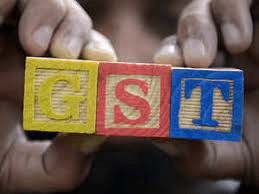New Delhi, Friday, 05 July 2019:
CITI Chairman, Shri Sanjay K Jain hailed the Hon’ble Union Minister of Finance, Smt. Nirmala Sitharaman’s maiden Union Budget 2019-20, presented in the Parliament today. The Union Finance Minister announced a number of measures and schemes to achieve the ambitious target set by the Government to become a US$ 5 trillion economy in the next few years, from its current level of US$ 2.7 trillion. Hon’ble Finance Minister further stated that when NDA government came to power in 2014 the actual size of the economy was US$ 1.85 trillion only. The growth in the economy is expected to pick up due to stable macroeconomic conditions.
Shri Sanjay K Jain welcomed the announcements made by the Hon’ble Union Finance Minister and congratulated her for presenting a holistic budget aiming to boost not only the overall economy but also to uplift the socio-economic conditions of the people of the country. Mr Jain was optimistic that the slew of positive announcements made in the budget speech will definitely help the inclusive development of the Indian economy and thereby the textile sector.
Chairman further stated that the Hon’ble Finance Minister has touched upon all the major aspects of the industry which can infuse confidence and growth in the Indian economy, such as, banking, infrastructure, logistics, power, farmer welfare schemes, etc. Mr Jain further stated that the formation of National Research Foundation is a positive and welcome step and this would lead to more constructive and focussed R&D in Textiles.
CITI Chairman pointed out some of the key budget announcements as follows:
Outlay for the Textile & Apparel Sector:
- In the present Budget, the grant for textile & apparel is budgeted at Rs. 4,831.48 Cr which is about 30.41% lower than the previous year’s revised grant. It is mainly because of discontinuation of ROSL scheme from March 7th 2019. The new schemecalled Rebate of State and Central Taxes and Levies (RoSCTL) which was announced simultaneously will be issued through free transferable scrips.
- In terms of percentage change, maximum change in grant is for Integrated Wool Development Program which has increasedby about 447% to Rs. 29 Cr. In terms of value, maximum grant is for Procurement of Cotton by Cotton Corporation of India (CCI) under Price Support Scheme which is 118% higher than the last year to stand at Rs. 2,017.57 Cr. It also has maximum share of 42% in overall grant for textiles.
- There has been a slight increase of about 12.4% in Amended Technology Upgradation Fund Scheme (A-TUFS) which is budgeted at Rs. 700 Cr.
- For Handicraft Development program, grant has been increased by about 18.9% to Rs. 286.17 Cr. While for Silk and Jute industries, grant has been increased by 23.2% to stand at Rs. 740 Cr and Rs. 34.55 Cr., respectively. Powerloom Sector got an increase of 49.8% in the total grant to value at Rs. 159.08 Cr.
- Grant for Integrated Scheme for Skill Development has been increased by about 139.3% to Rs 100.5 Cr as compared to Rs 42 Cr in the last year.
CITI Chairman pointed out that in addition to the above, the following budget announcements will help the Textile Industry to revive and grow exponentially and achieve its target set out at US$ 350 bn industry by 2025:
Customs Duty
- Reduction from 5% to 2.5% on imports of raw material under 5101 & 5105 (Wool fibre & Wool tops).
- Increase from 0 to 20% for HS code 56039400 (Water blocking tapes for manufacture of optical fiber cables)
- Reduction from 5% to 4% on naphtha, a key raw material for synthetic fibres.
Goods & Services Tax (GST)
- Under the Interest Subvention Scheme for MSMEs, Rs. 350 crore has been allocated for FY 2019-20, attracting 2% interest subvention for all GST registered MSMEs, on fresh or incremental loans.
- Taxpayers having annual turnover of less than Rs. 5 crore can now file quarterly returns.
- Government’s decision to introduce Legacy Dispute Resolution Scheme will allow quick closure of litigations which are pending from pre-GST regime. It’s a welcome decision which will allow trade and business to avail this opportunity and be free from legacy litigations.
Tax Proposals
- Threshold for applicability of lower corporate tax rate of 25% increased from Rs. 250 crore to Rs. 400 crore.
Woman Empowerment Scheme
- To expand women Self Help Group SHG interest subvention programme to all districts
- Rs. 1 lakh loan under MUDRA scheme for one woman in every SHG
- 70% of beneficiaries under MUDRA scheme are Women
Labour and Youth Welfare Scheme
Pradhan Mantri Laghu Vyapaari Maan-Dhan Yojana (PMLVMY)
- Pension benefits to around 3 crore retail traders and small shopkeepers with annual turnover less than Rs. 1.5 crore.
Pradhan Mantri Shram Yogi Maan-Dhan (PM-SYM)
- About 30 lakh workers have joined the scheme
- Rationalising labour laws into 4 labour codes proposed, which would ease business compliance costs
CITI Chairman concluded by saying that the textile sector is the biggest employer after agriculture employing 4.5 crore people directly and another 6 crore people in the allied sectors, as pointed out by the Economic Survey tabled yesterday in the Parliament. The Economic Survey also mentioned that Apparel Sector plays a critical role in improving the social dynamics as mostly women are employed in the sector. Above all, the backward linkages of the Sector to the rural economy give huge opportunities to millions of farmers, artisans, handloom and handicraft manufacturers. The sector is perfectly aligned with Government’s key initiatives viz., Make in India, Skill India, Women Empowerment and Rural Youth Employment.
(WITH A REQUEST FOR WIDER PUBLICITY IN YOUR DAILY LEADING BUSINESS NEWSPAPERS AND TEXTILE JOURNALS)

